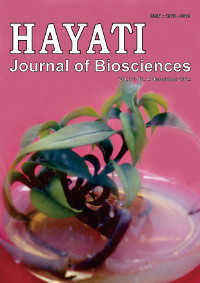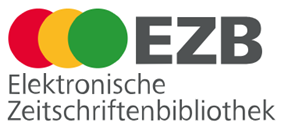Characterization of an Endophytic Bacterium G062 Isolate with Beneficial Traits
Abstract
An endophytic bacterium isolate G062 was characterized base on its molecular genetic potents, morphology, physiology, and biochemistry reactions. Analysis of 16S rDNA sequences of G062 showed the highest similarity to Paracoccus halophilus (98%). Detection of the phlD and prnC genes occurrence indicated that the bacterium had this antibiotic-like genes of Diacethylphloroglucinol (DAPG) and pyrrolnitrin. The cells are rod shaped (0.59-0.89 x 1.85-3.3 µm), aerobic, Gram negative, non motile, non spore forming, positive catalase, positive oxydase, could reduce NO3 to N2, nitrogen fixing, producing siderophore and plant growth hormones-like compounds (IAA, Gibberellin, and zeatin), and solubilizing phosphate. The G062 isolate could grow on media containing 2.5% NaCl. Range of the temperature and pH growth were 15-40 and 5.0-9.5 oC, respectively. The bacterium did not cause red blood cells lysis. There was no hypersensitive response when it was injected into tobacco leaves, and it was not pathogenic against potato plantlets. Moreover, the bacterium promoted the growth of the potato plant and had high colonization ability. These results suggested that the bacterium had beneficial and good traits as biological agent candidate to promote potato plant growth.Downloads
HAYATI J Biosci is an open access journal and the article's license is CC-BY-NC. This license lets others distribute, remix, tweak, and build upon author's work, as long as they credit the original creation. Authors retain copyright and grant the journal/publisher non exclusive publishing rights with the work simultaneously licensed under a https://creativecommons.org/


















.png) IPB University
IPB University Department of Biology
Department of Biology The Indonesian Biological Society
The Indonesian Biological Society 

